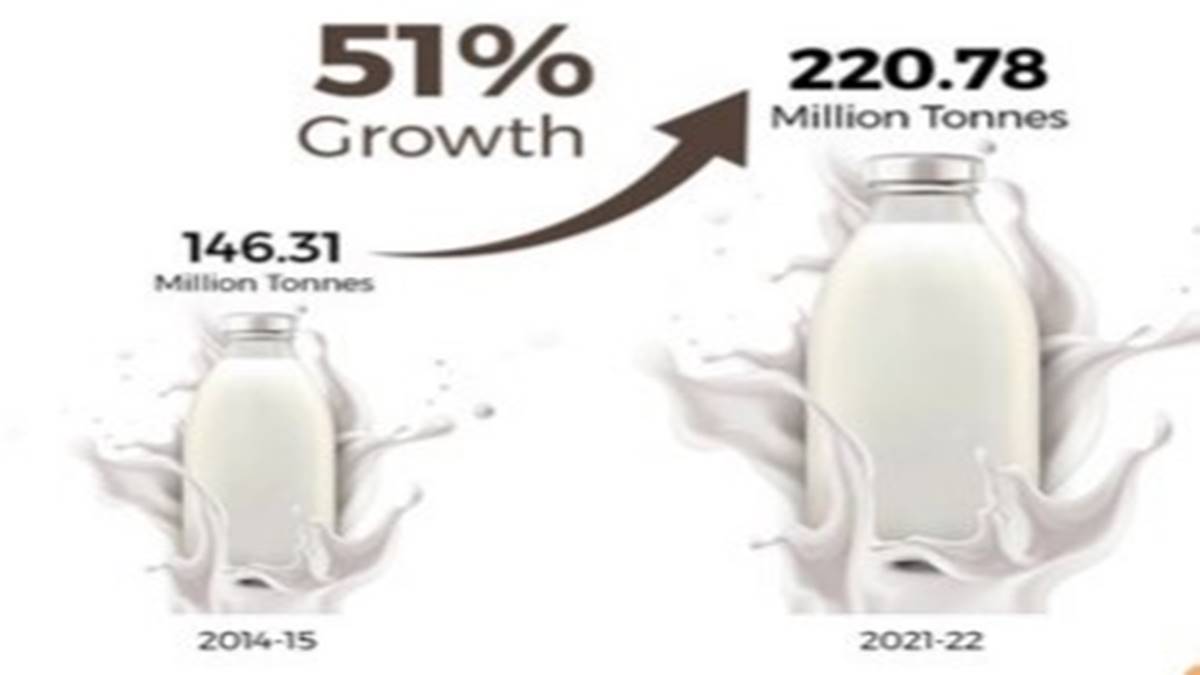15 Dec , 2022 By : Monika Singh

Adding another feather to its cap, India clinched the top spot in milk production and produced 220.78 million tonnes in 2021-22, informed the Government of India (GoI). The country is contributing a quarter of global milk production.
It is a 51 per cent growth when compared to 2014-15. At that time milk production was 146.31 million tonnes. The source of the data is the Ministry of Fisheries, Animal Husbandry and Dairying, Government of India.
It is pertinent to mention here that during the 1950s and 1960s, the situation was radically different. The country was a milk-deficit nation dependent on imports. For several years, the annual production growth was negative. During the first decade after independence, the annual compound growth rate in milk production was 1.64%. It declined to 1.15% during the 1960s.
In the country, in 1950-51, per capita consumption of milk was only 124 grams/day. By 1970, this figure had dropped to 107 grams/day, one of the lowest in the world. It was well below the minimum recommended nutritional standards. The dairy industry of India was struggling to survive. Despite having the largest cattle population in the world, the country produced less than 21 million tonnes of milk per annum.
In 1965, the National Dairy Development Board (NDDB) was created with a mandate to support the creation of the ‘Anand Pattern’ of dairy cooperatives across India through the Operation Flood (OF) programme. It was to be implemented in phases.
Through a National Milk Grid, OF helped quality milk reach consumers across 700 towns and cities. The programme also helped remove the need for middlemen and hence reduced seasonal price variations. For farmers, the cooperative structure made the whole exercise of production and distribution of milk and milk products economically viable. Slowly and gradually, India’s dependence on imported milk ended.
0 Comment